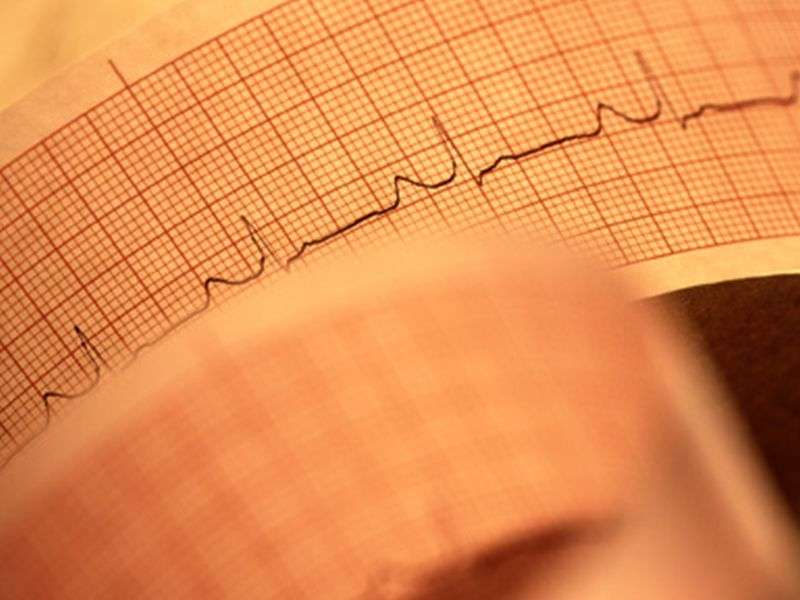Anterior T-wave inversion in 2.3 percent of healthy young adults

(HealthDay)—Anterior T-wave inversion (ATWI) occurs in 2.3 percent of young asymptomatic adults, usually in leads V1 and V2, according to a study published in the Jan. 3/10 issue of the Journal of the American College of Cardiology.
Aneil Malhotra, M.B.B.Chir., from St. George's University of London, and colleagues examined the prevalence and significance of ATWI in a cohort of 14,646 white individuals aged 16 to 35 years. Participants were evaluated using a health questionnaire, physical examination, and 12-lead electrocardiography.
The researchers detected ATWI in 2.3 percent of individuals, and it was more common in women than men (4.3 versus 1.4 percent) and in athletes versus non-athletes (3.5 versus 2.0 percent) (both P < 0.0001). T-wave inversion was mainly seen in leads V1 and V2 (77 percent); ATWI beyond V2 was seen in 1.2 percent of women and 0.2 percent of men. After further evaluation, no one with ATWI fulfilled the diagnostic criteria for arrhythmogenic right ventricular cardiomyopathy. None of the individuals with ATWI experienced an adverse event during a mean follow-up of 23.1 ± 12.2 months.
"ATWI confined to leads V1 to V2 is a normal variant or physiological phenomenon in asymptomatic white individuals without a relevant family history," the authors write. "ATWI beyond V2 is rare, particularly in men, and may warrant investigation."
More information:
Full Text
Editorial
Copyright © 2017 HealthDay. All rights reserved.



















